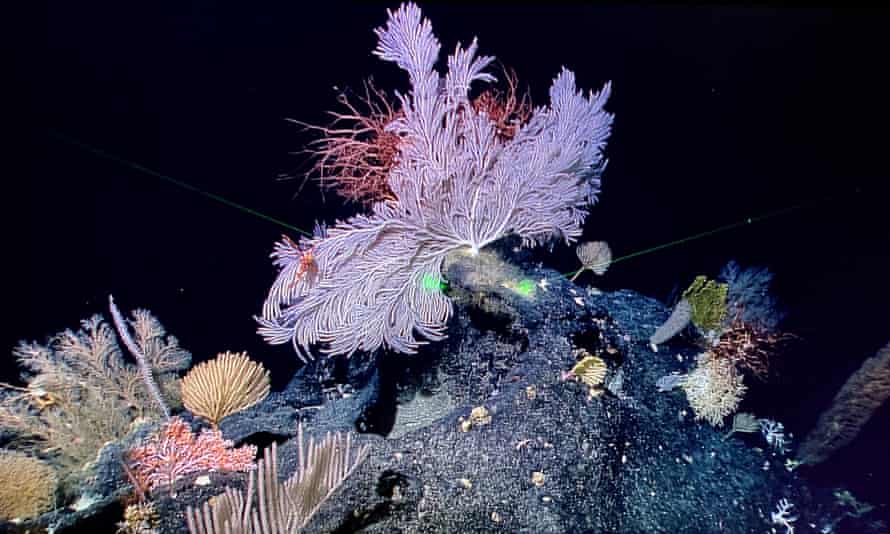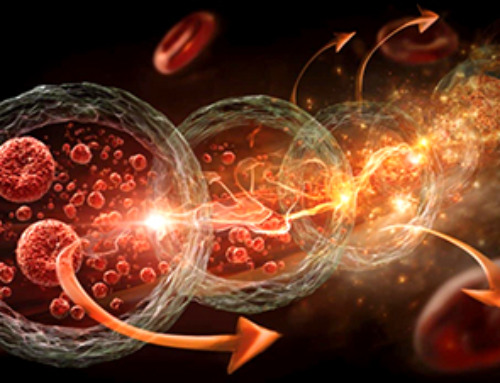It has been 30 years since the last new class of antibiotic was introduced to the market. All the existing drugs are essentially variations on a theme: they kill bacteria, in similar ways. Some burst cells walls, others block DNA replication.
But the bacteria are swiftly evolving to survive those chemical attacks – and as they survive, they become virulent superbugs. Without new antibiotics, by 2050 the death toll from drug-resistant infections is projected to reach 10 million people a year, making the coronavirus pandemic seem almost quaint.
This is why scientists at Plymouth University have been searching the cold, dark abyss of the north Atlantic – where they have found sponges that contain powerful molecules capable of killing those superbugs.

Kerry Howell, professor of deep-sea ecology, and her colleagues have been carefully collecting specimens of these plant-like animals, bringing them back to the lab and testing pulverised extracts against stubborn, disease-causing bacteria. Among the deep-sea molecules, they are finding promising bactericidal novelties.
“We don’t actually know exactly what they are yet,” says Prof Mat Upton, a microbiologist who leads the laboratory side of the biodiscovery programme at Plymouth. “We’ve got compounds that kill bacteria that we want to try to kill, and we have a pretty good idea that they are new compounds. It is early, but things are progressing through the pipeline.”
The hit rate for finding powerful and useful new compounds is proving to be especially high among animals of the deep sea. Hundreds of biologically active compounds have been found at the bottom of the ocean, some already in widespread use. Enzymes found in bacteria living around hydrothermal vents are even being used in tests for the Covid virus.
Yet novel antibiotics and an untold variety of beneficial molecules could easily be wiped out if ecosystems around vents and elsewhere on the ocean floor were to be destroyed by deep-sea mining, which could go ahead in less than two years. Even after 40 years of scientific research since hydrothermal vents were first found, a tremendous amount is still being discovered about these extreme ecosystems, which thrive in scorching, toxic waters pouring through cracks in the deep seabed, miles underwater.
Howell says: “Part of the big concern that all deep-sea ecologists have is that we know just how little is known about these areas and we are desperately trying to play catch-up with the [deep-sea mining] industry. To my mind, that’s the wrong way round. We ought to be finding out about these places before we even consider mining them.”
One of the potential targets for deep-sea mining is the south-east Atlantic abyss, where Howell is planning her next expedition, along with South African colleagues. “It’s one of the least-explored parts of our planet. There’s really very little data,” she says .
News
AI matches doctors in mapping lung tumors for radiation therapy
In radiation therapy, precision can save lives. Oncologists must carefully map the size and location of a tumor before delivering high-dose radiation to destroy cancer cells while sparing healthy tissue. But this process, called [...]
Scientists Finally “See” Key Protein That Controls Inflammation
Researchers used advanced microscopy to uncover important protein structures. For the first time, two important protein structures in the human body are being visualized, thanks in part to cutting-edge technology at the University of [...]
AI tool detects 9 types of dementia from a single brain scan
Mayo Clinic researchers have developed a new artificial intelligence (AI) tool that helps clinicians identify brain activity patterns linked to nine types of dementia, including Alzheimer's disease, using a single, widely available scan—a transformative [...]
Is plastic packaging putting more than just food on your plate?
New research reveals that common food packaging and utensils can shed microscopic plastics into our food, prompting urgent calls for stricter testing and updated regulations to protect public health. Beyond microplastics: The analysis intentionally [...]
Aging Spreads Through the Bloodstream
Summary: New research reveals that aging isn’t just a local cellular process—it can spread throughout the body via the bloodstream. A redox-sensitive protein called ReHMGB1, secreted by senescent cells, was found to trigger aging features [...]
AI and nanomedicine find rare biomarkers for prostrate cancer and atherosclerosis
Imagine a stadium packed with 75,000 fans, all wearing green and white jerseys—except one person in a solid green shirt. Finding that person would be tough. That's how hard it is for scientists to [...]
Are Pesticides Breeding the Next Pandemic? Experts Warn of Fungal Superbugs
Fungicides used in agriculture have been linked to an increase in resistance to antifungal drugs in both humans and animals. Fungal infections are on the rise, and two UC Davis infectious disease experts, Dr. George Thompson [...]
Scientists Crack the 500-Million-Year-Old Code That Controls Your Immune System
A collaborative team from Penn Medicine and Penn Engineering has uncovered the mathematical principles behind a 500-million-year-old protein network that determines whether foreign materials are recognized as friend or foe. How does your body [...]
Team discovers how tiny parts of cells stay organized, new insights for blocking cancer growth
A team of international researchers led by scientists at City of Hope provides the most thorough account yet of an elusive target for cancer treatment. Published in Science Advances, the study suggests a complex signaling [...]
Nanomaterials in Ophthalmology: A Review
Eye diseases are becoming more common. In 2020, over 250 million people had mild vision problems, and 295 million experienced moderate to severe ocular conditions. In response, researchers are turning to nanotechnology and nanomaterials—tools that are transforming [...]
Natural Plant Extract Removes up to 90% of Microplastics From Water
Researchers found that natural polymers derived from okra and fenugreek are highly effective at removing microplastics from water. The same sticky substances that make okra slimy and give fenugreek its gel-like texture could help [...]
Instant coffee may damage your eyes, genetic study finds
A new genetic study shows that just one extra cup of instant coffee a day could significantly increase your risk of developing dry AMD, shedding fresh light on how our daily beverage choices may [...]
Nanoneedle patch offers painless alternative to traditional cancer biopsies
A patch containing tens of millions of microscopic nanoneedles could soon replace traditional biopsies, scientists have found. The patch offers a painless and less invasive alternative for millions of patients worldwide who undergo biopsies [...]
Small antibodies provide broad protection against SARS coronaviruses
Scientists have discovered a unique class of small antibodies that are strongly protective against a wide range of SARS coronaviruses, including SARS-CoV-1 and numerous early and recent SARS-CoV-2 variants. The unique antibodies target an [...]
Controlling This One Molecule Could Halt Alzheimer’s in Its Tracks
New research identifies the immune molecule STING as a driver of brain damage in Alzheimer’s. A new approach to Alzheimer’s disease has led to an exciting discovery that could help stop the devastating cognitive decline [...]
Cyborg tadpoles are helping us learn how brain development starts
How does our brain, which is capable of generating complex thoughts, actions and even self-reflection, grow out of essentially nothing? An experiment in tadpoles, in which an electronic implant was incorporated into a precursor [...]





















